History
Fuel Miser Comparison (2010/2022) Audi-Fiat

One of the easiest ways to counter any rises in the fuel prices is to look at downsizing to a more economical car. If this sounds something you’d be into, then you certainly won’t be the first person to do so. We’ve just purchased a smaller Honda Jazz as a run around. Just think back to the fuel crisis in the seventies.
Anyway, it’s always an interesting topic, and who wouldn’t mind driving a new- to late-model car that spends less time at the gas pump. If you are a commuter, then you’ll appreciate owning a car that doesn’t cost the earth to run.
I thought I’d look at a list of cars that featured in an article written back in 2010, where I compared some of the thriftiest cars at that time. These were cars which had been designed to function as some of the world’s best fuel sippers. These vehicles were sold new in Australia, but I thought I’d add a new twist this time by adding what we can consider as the brand new version of these old models with their statistics for fuel consumption as a comparison – you know, a bit of nostalgia along with the new, and what’s changed – or not.
Note that the fuel consumption figures are based on the number of litres of fuel consumed every 100 km travelled. Often real world situations can play havoc with Lab tested fuel consumption figures, but this definitely gives you an interesting picture And, here is the list that is in alphabetical order – just to be helpful:
Audi
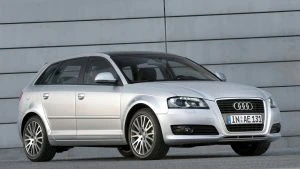
Audi A3 TDI 2010
The 2010 Audi A3 TDI offered a tidy package with practicality and comfort on its side. It uses the 1.9-litre TDI engine linked to a 5-speed manual gearbox that has plenty of useful torque and manages a fuel economy figure of around 4.5 litres/100 km. It was probably one of the roomiest economy cars on this list at the time.
Audi’s 2022 A3 is available in three model grades and two body styles ” Sportback (hatchback) and Sedan. Two powerplants are available for the stylish new A3. The most fuel efficient is the 35 TFSI 1.5-litre turbo-petrol with mild-hybrid technology producing 110kW/250Nm with a claimed 5 litres/100 km combined economy.

Audi A3 2022
Audi also has the smaller A1 model to add to your shopping list, which you can now buy new. It has a 1.0-litre 3-cylinder ULP engine with 85kW/200Nm and a 5.4 litres/100 km combined economy, or a 1.5-litre four-cylinder 110kW/250Nm option with a 5.8 litres/100 km combined economy.

Audi A1 2022
BMW
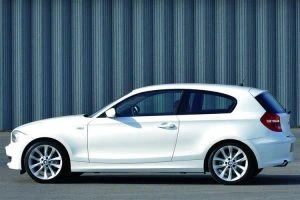
BMW 118d 2010
At the time, another small German car, the 2010 BMW 118d, offered a fun drive and used an automatic gearbox with a stop/start function for the engine. It also offers a slick 6-speed manual gearbox option and achieved an impressive 4.5 litres/100 km for its combined fuel economy. You have 300 Nm of torque, and it feels a punchy little powerhouse, and it’s also RWD!
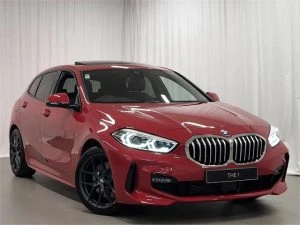
BMW 118i M Sport
In 2022, the 1-Series is available in a 118i M Sport version, which uses a 103kW/220Nm three-cylinder turbo ULP (unleaded petrol) motor with a claimed 5.9 litres/100km combined.
Citroen
The French loved to rival the Germans, and still do, so it was no surprise to see that the Citroen C3 and C4 featured in 2010. They are still nice-looking and comfortable cars. The Citroen C3 HDi offers the driver a tidy fuel consumption figure of 4.4 litres/100 km, while the bigger and roomier C4 HDi could deliver 4.5 litres/100 km in combined fuel economy runs.
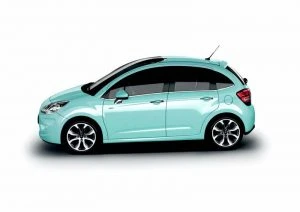
Citroen C3 2010
2022 sees Citroen’s C3 with much more grown-up styling, and a 1.2-litre three-cylinder 82kW/205NmTurbo petrol engine that delivers the power through a 6-speed automatic FWD driveline. Fuel consumption should see around 5.7–6.4 litres for a Worldwide Harmonised Light Vehicle Test Procedure (WLTP) combined cycle, which is the current testing process for measuring a new car’s fuel economy, electric driving range, and emissions.

Citroen C3 2022
Fiat
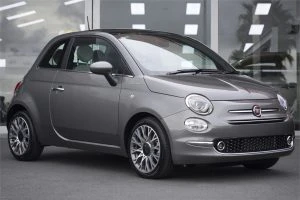
Fiat 500 2022
One of the 2010 super cuties, and still with endless loads of flair, is the nicely packaged turbo-diesel Fiat 500 that captures your attention. Whether it is the 1.3 JTD engine mated to a 5-speed or 6-speed manual gearbox, both options provided a thrifty 4.0–4.5 litres/100 km fuel consumption.
2022 Fiat 500 cars are still available new, of course with all their modern updates and new technology like Apple CarPlay and Android Auto, Bluetooth connectivity, and updated safety technology. The current 500 and 500 Convertible offer a manual or single-clutch automated manual five-speed gearbox that underpins the driving force behind the 1.2-litre 4-cylinder engine producing 51kW and 102Nm. Fiat rate it good for around 4.9 litres/100 km on a combined run, making this a great modern car to drive in an urban setting.
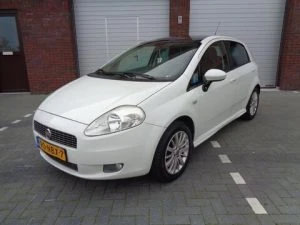
Fiat Punto 2010
In 2010, the Italian flamboyance continued with the Punto 1.3 and 1.4 JTD models. The Punto handles the road well, making it rewarding to drive, while returning a combined 4.6 litres/100 km. Currently, Fiat no longer sells a New Punto model, so, if you’re into Fiats, then the 500 is the one for you.
Classic Citroen
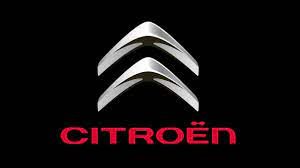
As mentioned in a more recent blog, Stellantis is official: PSA and FCA have merged under the name Stellantis. The name Stellantis originates from the Latin verb “stello” which means “to brighten with stars”. Car maker, Stellantis, now has 14 car brands under its wing, and they include: Abarth, Alfa Romeo, Chrysler, Citroen, Dodge, DS Automobiles, Fiat, Jeep, Lancia, Maserati, Opel, Peugeot, Ram, and Vauxhall. As far as its size goes, Stellantis is now the 4th-largest carmaker in the world, behind Toyota, VW Group, and the Renault-Mitsubishi-Nissan Alliance.
As you might have noticed, one of the 14 car brands is Citroen. Stellantis is planning to launch a new model under the Citroen brand for India and Latin America in 2022. The idea is for Stellantis to push outside the boundaries of its conventional European sales territory and branch further into emerging markets where it has had much less exposure.
Citroen left India in the 1930s, so some water has certainly past under the bridge since then. At a time when some other foreign carmakers are leaving India after struggling to make a profit there, Stellantis is seizing an opportunity with its Citroen-based products and heading straight on in. The company recently said it plans to produce a new version of the Citroen C3, which is commonly a city car in Europe, will be launched into India and Latin America in the second half of 2022. The car will be produced in India through a joint venture with CK Birla, and in Brazil. It is likely to be the first of 3 models aimed primarily for India and Latin America – these 3 models being produced over the next 3 years. By 2030, Stellantis expects India to become the world’s 3rd biggest car market after China and the U.S.
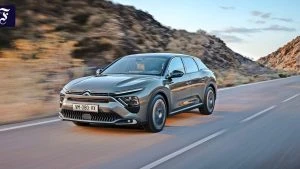
Citroen C5 X
However, Stellantis isn’t running away from Europe car markets anytime soon. It is well-known that the big German brands are dominating the midsize car segment in Europe, however Stellantis’s European focus is ramping up. Following the Peugeot 508 and glorious Citroen DS9, Citroen has a new flagship model that they want to put against the classy Mercedes E-Class, BMW 5 Series, and Audi A6 models. What is exciting is that the new Citroen C5 X will be a car that is a bit sedan, a bit wagon and a bit SUV in its design. The relatively flat roofline has a bit of sedan in its lines. The drawn-out rear-end brings the station wagon style, and then the tall ride height is more SUV – reminiscent of the C5 Aircross. At 4805 mm long, 1865 mm wide and 1485 mm tall, the new Citroen C5 X is smaller than its potential German rivals. It offers 545 litres of boot space behind the rear seats, which can be expanded to 1640 litres after the rear seats have been folded flat.
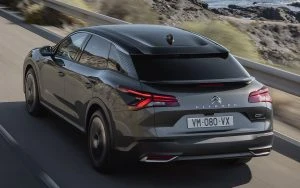
Citroen C5 X
It has to be said that the new Citroen C5 X boasts a quirky exterior that takes after the 2016 Cxperience concept. Its interior will be loaded with technology – all the very best tech that Citroen has to offer. A 12-inch touchscreen for infotainment, a large head-up display with support for augmented reality, a fully digital driver’s display, separate physical controls for the climate-control settings, sumptuous seating, and superior ride quality and comfort are just some of the features of the soon-to-be available Citroen C5 X will provide.
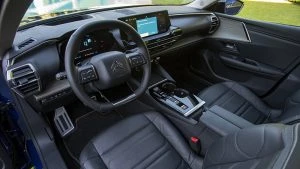
Citroen C5 X
Speaking of Citroen ride quality, the new Citroen C5 X flagship will come with the patented Citroen Advanced Comfort suspension, with the plug-in hybrid version making comfort even further advanced by featuring an active suspension. It boasts what the French automaker refers to as Progressive Hydraulic Cushioning, which when combined with exceptionally comfy seats, it should enable a silky-smooth ride even on bumpy surfaces – all in legendary Citroen fashion.
A variety of petrol-fed engines are planned; however, Citroen highlights the plug-in hybrid powertrain with 168 kW and more than 50 km of electric range as a special model to take on the gradual change to hybrid and EV technology. The Citroen C5 X PHEV model will be able to travel at speeds of up to 135 km/h in full electric mode.
The brand-new Citroen C5 X, made under the Steallantis name, will go on sale in Europe in the second half of 2022. Let’s hope that we see it as part of Citroen Australia’s line-up, too. With Australia’s growing love of the SUV, it would seem a logical model to bring over here…
For something a little different!
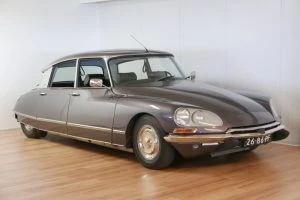
Citroen DS 1970
The 1955–1975 Citroen DS is still regarded as one of the most unique and interesting cars to have ever been made. The idea of retrofitting one of these to modern electric propulsion would be in the spirit of all things Citroen. A company known as ‘Electrogenic’ decided to reinvent the Citroen DS model with a battery-powered conversion.
The Oxford-based company retained the original car’s aerodynamic body but swapped the 2.0-liter petrol-fed engine for a brushless electric motor that produces 89 kW of power and 235 Nm of instant torque – a rather meaty performance upgrade. Interestingly, the power is delivered to the front wheels through the car’s original manual gearbox.
Providing the electric energy for the powertrain is a 48.5-kWh battery pack that is housed within the DS’s body. Electrogenic stated a real-world driving range of about 225 km per charge was doable. A 29-kW charger will refill the batteries to full capacity in about two hours. If the customer wanted a larger battery for a higher range between charges, it can be provided in a combination with a more powerful charger.
One of the fine attributes of the old Citroen DS was its silky-smooth hydro-pneumatic suspension. Electrogenic has also improved the hydro-pneumatic system by replacing the standard mechanical pump with an electric pump, which is more silent and delivers a more sophisticated ride than the original.
From the outside, the only visual differences between the original DS and the electric-powered conversion are the lack of exhaust pipes and the subtle but distinctive “DS EV electronique” decal on the boot.
Steve Drummond, director of Electrogenic, says that “Repowering classic cars with all-electric drive brings a number of benefits, from the ease of use to reliability and performance gains”. Of course, the quiet EV function brings out the best in old-timer classics.
A Moment of Silence
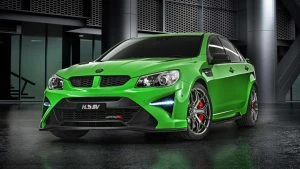
Holden HSV
Over the last decade there have been a few car manufacturers who have pulled out of selling cars in Australia. But, as those leave, there have also been numerous new marques who have arrived on the scene, which is great to see. Let’s not forget the old faithful marques, who are the manufacturers like Toyota, Honda, BMW and Porsche who have been selling cars in Australia for three decades or more. So what’s changed over the last ten years?
Over this last decade we have had to say goodbye to Holden – perhaps the saddest exit. The company was founded in 1856 as a saddlery manufacturer in South Australia, only to be wound up over the last year or so. The Holden roots in Australia have run very deep.
Chery made its arrival in 2011 and stuck around for a few beers and was off again in 2016. Chery once sold Australia’s cheapest new car for under $10k.
During the last decade, Dodge wrapped things up as well, though we still see the RAM logo in the form of the RAM Trucks that are sold new in Australia. A RAM Truck is the king of the Ute/light truck world.
Equally as sad, for some, as the vanishing of Holden has been the cessation of the awesome line of HSV (Holden Special Vehicles) and FPV (Ford Performance Vehicles) muscle cars. Oh how things change when people get a whiff of the climate change spin and big money opportunities with such amazing “clean” vehicles like EVs.
One luxury marque that made a brief appearance was Infiniti. Only recently, we’ve waved goodbye to this very classy and elegant line of cars that for some reason struggled to make their way into a buyer population who were stayed in their buying habits. Some of the Infiniti cars were seriously quick, had unique style and were reliable and comfortable.
2012 saw Opel opening many showrooms across Australia. The new Opel Astra and Opel Insignia cars were quite stylish cars, though they only managed a few sales. They too had a few beers and then folded up a year or two later.
Proton cars also came onto the scene in 2012 and sold a few hundred cars, however the aging models did not sell well in 2017 at all, so they were axed. There are rumours of them making a comeback with a new range of cars under Geely’s ownership.
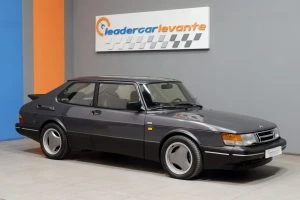
1991 Saab 900 Turbo 16 S
Another very sad day in the last decade of the Australian and global motoring industry was when Saab were forced to wrap up. I miss their individuality and the range of powerful four-cylinder, turbocharged engines. Australia has also said goodbye to Smart cars, a range of tiny city cars that were made by Mercedes. They never sold well.
The new popular car marques that have entered the Australian car market over the last few years has been: Genesis, Great Wall, Haaval, LDV, Mahindra, MG, RAM Trucks and Tesla. Most of these are of Asian origin.
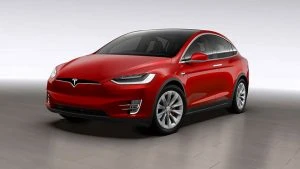
Tesla
Aussie’s Rosco aiming for 1000 mph
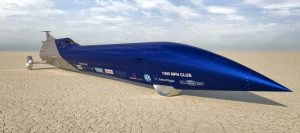
Aussie Invader 5R
It might be a bit hard to call it a conventional car but then it’s not really a conventional car in the sense that the Aussie Invader 5R rocket-car looks more plane/rocket in its appearance. The Aussie Invader 5R rocket-car boasts an insanely long arrow-shaped design with three wheels, large aerodynamic wind deflectors and an engine with close to 150,000 kW! Yes, that’s correct; you did read that figure correctly. To put that in perspective, an Aussie V8 Supercar puts out, on average, around 475 kW of power. Now, if you’ve ever experienced the wonderful roar of these V8s when they blast by around the circuit, then you can understand the aura of such kW potency. But this Aussie Invader 5R rocket-car makes as much power as 316 of these Aussie V8 Supercars put together! The Aussie Invader 5R rocket-car is powered by a single bi-propellant rocket reportedly capable of producing upwards of 62,000 lbf of thrust. That’s over four times more than a Boeing 737 jet!
Founder and designer of the new Aussie Invader 5R rocket-car, Rosco McGlashan, has the world’s fastest land speed record in his sights. He will reportedly be the pilot of the 16-metre long, nine-tonne steel-framed vehicle. And the target? The target top speed of 1609 km/h (1000 mph) would be the fastest of any land-going vehicle, ever. And 1000 mph would see it blitz the current land speed record held by the Noble Thrust SSC on a Nevada salt flat in 1997, which averaged 1223.7 km/h and broke the sound barrier while doing so.
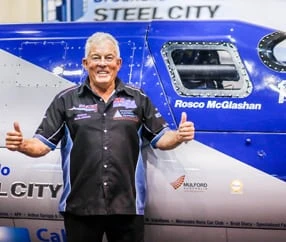
Rosco McGlashan
Rosco McGlashan would like to set the new record next year once all the Covid palaver is over-and-done-with, and it will likely be set somewhere in the Queensland or Western Australian desert. Rosco is no stranger to setting speed records; he is already the holder of the Australian land speed record, where in 1994 he clocked 802.6 km/h behind the wheel of a jet-powered predecessor to the Aussie Invader 5R out on the dry salt flats of Lake Gairdner, near Adelaide. He has, after all, built all of his drag racing, exhibition, and land-speed racing vehicles himself over the years in a shed at his home.
Rosco has accurate computer modelling on the Aussie Invader 5R rocket-car, which suggests that the Aussie Invader 5R rocket-car will have enough power and thrust for launching the car from 0-100 km/h in approximately 1.1 seconds. It should reach its target of 1000 mph in less than 30 seconds. Slowing the Aussie Invader 5R rocket-car down is no mean feat and will thus will require a full 13 km of flat desert just to stop it. A multi-stage deployment of high-speed hydraulic air brakes, mid-speed parachutes, and low-speed disc brakes have been designed to activate progressively to safely bring the vehicle to a halt.
Picking an exact location will depend largely on which organization or individual steps up as the primary sponsor for the effort. As will the practical necessity of having 5 km of flat desert for getting up to speed plus another 13 km to stop it.
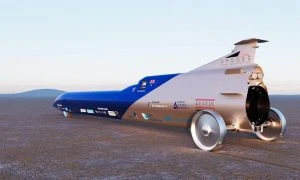
Aussie Invader 5R